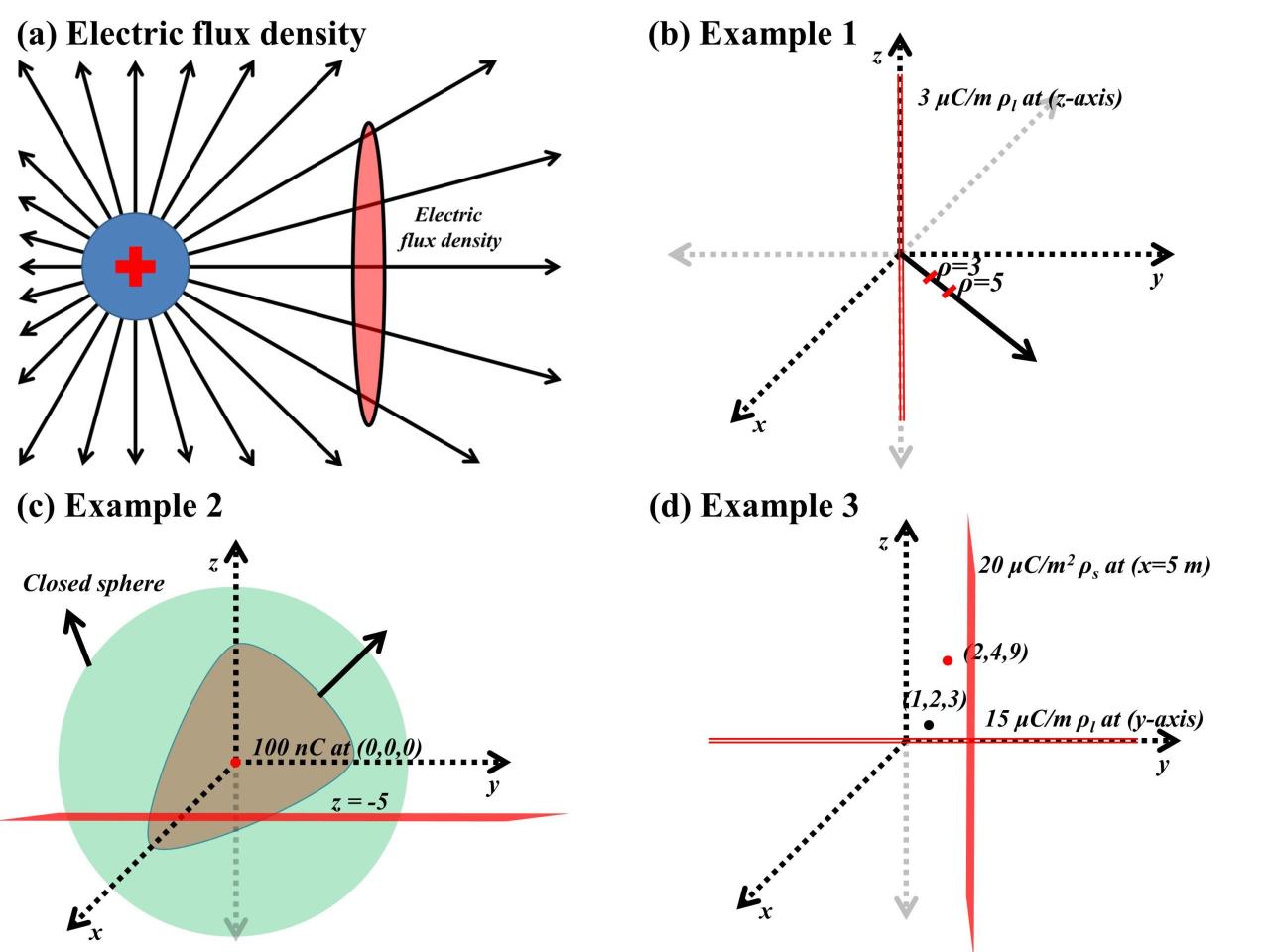A point charge causes an electric flux of, a fundamental concept in electromagnetism that unveils the intricate relationship between electric charges and their influence on the surrounding space. Dive into the electrifying world of point charges and their ability to generate an electric flux, shaping electric fields and influencing the behavior of charged particles.
A point charge causes an electric flux of, which can be interrupted by a break in an electrical circuit a break in an electrical circuit 2 words . This break prevents the flow of electric current, resulting in the absence of electric flux.
However, when the circuit is complete, the point charge can again cause an electric flux, establishing a continuous flow of electric current.
In this exploration, we’ll unravel the mysteries of electric flux, delve into the properties of point charges, and uncover the profound implications of their interactions. From Gauss’s law to practical applications, prepare to embark on a captivating journey into the realm of electric flux and point charges.
Introduction: A Point Charge Causes An Electric Flux Of
In the realm of electromagnetism, understanding the behavior of electric charges is crucial. One fundamental concept in this domain is electric flux, which measures the flow of electric field lines through a given surface. In this article, we will explore the relationship between a point charge and the electric flux it causes, delving into the concepts of electric fields and Gauss’s law.
Electric Field due to a Point Charge
An electric field is a region of space around a charged object where other charged objects experience an electric force. For a point charge, which is a theoretical construct representing a charge concentrated at a single point, the electric field can be calculated using Coulomb’s law.
When a point charge gets busy, it can cause quite a stir in the electric field, creating a flux that spreads out like ripples in a pond. But if you’ve got a dipole, like a couple of point charges hanging out together, things get even more interesting.
Check out a dipole in an electric field and see how the flux gets all twisted up! But don’t forget, even with the dipole drama, it’s still the point charge that’s the real source of the electric flux, causing the party to get started.
The electric field strength at a distance ‘r’ from a point charge ‘q’ is given by:
E = k
q / r2
A point charge causes an electric flux of, you guessed it, a point charge. And speaking of points, did you know that a circuit breaker is an electro-magnetically operated switch ? Anyway, back to our point charges. A point charge causes an electric flux of…
where k is the Coulomb constant.
A point charge causes an electric flux of. Even a bird is standing on an electric transmission wire, its body does not conduct electricity. This is because the bird’s body is not a good conductor of electricity. A point charge causes an electric flux of.
Gauss’s Law
Gauss’s law is a fundamental theorem in electrostatics that relates the electric flux through a closed surface to the enclosed charge. It states that the total electric flux through any closed surface is proportional to the net charge enclosed within that surface.
Mathematically, Gauss’s law can be expressed as:
∮ E · dA = Qenc/ ε 0
A point charge causes an electric flux of. Think about that the next time you see an electric fence. 50 years ago that wasn’t an electric fence . Now it is, and it’s a powerful reminder of the dangers of electricity.
A point charge causes an electric flux of.
where ∮ E · dA represents the surface integral of the electric field over the closed surface, Q encis the net charge enclosed within the surface, and ε 0is the permittivity of free space.
Applications of Electric Flux due to a Point Charge
The electric flux due to a point charge finds applications in various fields:
- Electrostatic Discharge (ESD): Understanding electric flux is crucial in preventing electrostatic discharge, which can damage electronic components.
- Capacitance: The electric flux between two conductors determines their capacitance, which is a measure of their ability to store electrical energy.
- Lightning Rods: Lightning rods work by increasing the electric flux around a structure, diverting lightning strikes away from it.
Outcome Summary

In conclusion, a point charge causes an electric flux of, providing a fundamental understanding of electric fields and their behavior. Gauss’s law serves as a powerful tool for calculating electric flux, while practical applications showcase the significance of this concept in various fields.
As we all know, a point charge causes an electric flux of. Well, in the same vein, did you also know that there are a lot of hidden costs to owning an electric car? Here are ten that you should be aware of before you make the switch.
And remember, a point charge causes an electric flux of.
Whether in physics, engineering, or medicine, the electric flux due to point charges plays a crucial role in shaping our understanding of the electromagnetic world.
General Inquiries
What is electric flux?
Electric flux measures the amount of electric field passing through a given surface.
How does a point charge create an electric flux?
A point charge generates an electric field that extends in all directions, resulting in an electric flux through any surface surrounding the charge.
A point charge causes an electric flux of. Speaking of electric motors, have you heard about a 2 inch diameter pulley on an electric motor ? It’s quite the marvel of engineering. Anyway, getting back to our topic, a point charge causes an electric flux of.
What is Gauss’s law?
Gauss’s law relates the electric flux through a closed surface to the total charge enclosed within that surface.